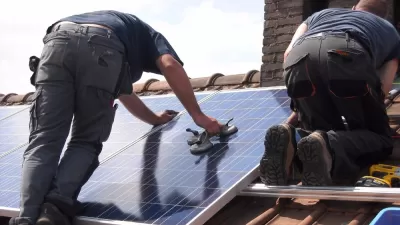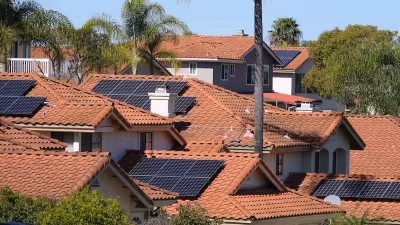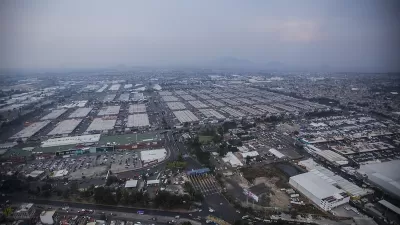Rooftop solar customers in California could face higher costs and reduced incentives if a proposed overhaul of the state's solar program is approved by the Public Utilities Commission.

If the California Public Utilities Commission approves an update to the state's solar incentive program, property owners could see a rise in costs for rooftop solar energy, among other changes, reports Sammy Roth. "Officials say the changes are needed to keep the lights on, prevent electricity rates from rising and encourage people to install batteries, while still growing the solar market. Solar executives say they would backfire and crater a thriving industry."
The changes, which would only apply to Edison, PG&E, and SDG&E customers, would "reduce payments to solar customers who send electricity to the power grid" through an overhaul of the process called net metering and add a monthly fee for homeowners that install solar, but also create a temporary "market transition credit" and fund programs to install clean energy in low-income communities and help homeowners buy batteries. Homes with existing solar panels would pay highly variable rates based on time of day.
Solar advocates and environmental groups are "slamming the proposed decision," calling it a huge setback for a badly needed and still nascent industry. But some also agree that the new model is more equitable and could help more low-income families invest in solar power.
Roth outlines the response from a variety of stakeholders including consumer advocates, the solar industry, utilities, home builders, and investors. While most agree on the need for more rooftop solar, they disagree on whether lowering existing incentives, even with transition assistance, will harm the rate of adoption of solar panels.
FULL STORY: Everything you need to know about California’s plan to slash solar incentives

Maui's Vacation Rental Debate Turns Ugly
Verbal attacks, misinformation campaigns and fistfights plague a high-stakes debate to convert thousands of vacation rentals into long-term housing.

Planetizen Federal Action Tracker
A weekly monitor of how Trump’s orders and actions are impacting planners and planning in America.

In Urban Planning, AI Prompting Could be the New Design Thinking
Creativity has long been key to great urban design. What if we see AI as our new creative partner?

Pedestrian Deaths Drop, Remain Twice as High as in 2009
Fatalities declined by 4 percent in 2024, but the U.S. is still nowhere close to ‘Vision Zero.’

King County Supportive Housing Program Offers Hope for Unhoused Residents
The county is taking a ‘Housing First’ approach that prioritizes getting people into housing, then offering wraparound supportive services.

Researchers Use AI to Get Clearer Picture of US Housing
Analysts are using artificial intelligence to supercharge their research by allowing them to comb through data faster. Though these AI tools can be error prone, they save time and housing researchers are optimistic about the future.
Urban Design for Planners 1: Software Tools
This six-course series explores essential urban design concepts using open source software and equips planners with the tools they need to participate fully in the urban design process.
Planning for Universal Design
Learn the tools for implementing Universal Design in planning regulations.
planning NEXT
Appalachian Highlands Housing Partners
Mpact (founded as Rail~Volution)
City of Camden Redevelopment Agency
City of Astoria
City of Portland
City of Laramie





























